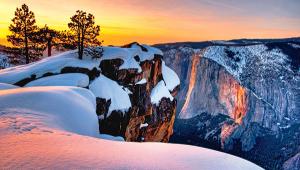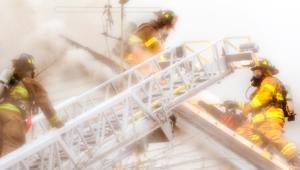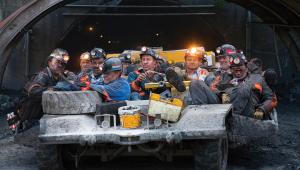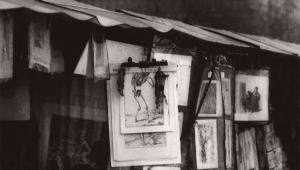Tough Beauties: Photographing New York's Oldest & Largest Women's Motorcycle Club

Inspired by Marilyn Monroe’s quote, “I don’t mind living in a man’s world, as long as I can be a woman in it,” photographer Mandira Bahl set off in early 2017 to document the lives and rides of Sirens MC, New York City’s oldest and largest women’s biker group. We recently caught up with Bahl to find out more about the project and how she became interested in telling the story of these “Tough Beauties.”
Shutterbug: Give us a little background on yourself as a photographer.
Mandira Bahl: I was born and brought up in India. I graduated in social communication media with photography as my major and also held a solo photo exhibition. This was followed by intensive individual coaching by professional experts. I interned with a few publications and NGOs where I applied my skills of photography, journalism, research, and documentation. I decided to do a specialization in photojournalism for which I completed a course in Documentary Practice and Visual Journalism from the International Center of Photography (ICP) in New York. Telling stories has always been an important aspect, which found its expression through photographs and text. It started as a hobby and soon became what I now call a never-ending journey of visual storytelling.

SB: Tell us about the Tough Beauties project and how you got interested in the subject matter.
MB: I was struggling to get hold of a long-term project for which I would be passionate about. I do have a hidden love for motorcycles and exquisite cars. I also get fascinated by women who take on the world. Tough Beauties started in November 2016 after I attended a bike expo at the Javits Center in New York City. I started contacting women’s riding groups just so I could get associated with them and hopefully learn the skill of riding a “steel horse.” I was lucky and honored to be invited by the Sirens MC—the oldest and one of the largest women-only riding groups in NYC. They were kind to allow me to meet and spend time with them. With frequent meetings and me tagging along and covering every event of theirs, I soon became a part of their group. Over the months, I was able to get into the lives of the individual women and I had no idea this would turn out to be a serious long-term project.

SB: What was the biggest challenge with this project?
MB: The initial challenge was of access. Being physically invited to their meetings is one aspect but getting access into the individual lives of the women was the major milestone. But I kept at it. I guess perseverance paid off. It was all about gaining their trust and that did take awhile. The other challenge was keeping pace. I could not muster enough availability to be at the right place at the right time. These were the challenges; otherwise the journey was a very beautiful and satisfying one.

SB: In addition to photography, there are other documentary aspects to this project, including audio interviews with bikers. What appealed to you about this multimedia approach and would you suggest it to other photographers?
MB: I did take audio interviews, video clips of the women riding, and also made a short film about what it is to be called a “tough beauty.” I felt that would complete what I could not capture through still images. I think that helped. However, this choice of sticking to photographs and text appealed to me as it is challenging to show the speed of the bike in still images. Along with this, showing the bonding and sense of sisterhood in frozen frames are lifelong memories apart from being candid. I would still suggest this photo-essay method and multimedia can always be supplemental.

SB: How long did it take for you to earn the trust of the group and was there ever a point where you became just a “fly on the wall,” or were they always, at least to some extent, aware you were documenting them?
MB: Though the women were really cool about me documenting their lives, it took me about two months to get full access. I started bonding with individual women from the very start as that helped in giving me a peek-a-boo into what I was getting into. The very first person that welcomed me with open arms was Andrea Sears. We started to chill at her garage and she soon invited me over to watch her sing with the rest of the Siren sisters. They are an amazing bunch of women, so warm and friendly.

SB: Why do you think the topic of an all-female biker group is particularly relevant today?
MB: Being a female biker is relevant today as it highlights the aspect of following one’s dream. Women who have taken up sports/professions that challenge their gender stereotype are evergreen inspiring stories. They help empower other women, giving them a boost to pursue their dreams. The other aspect is the internal bonding and group support. It was over the common passion of riding that the women became a collective body. They support and uplift each other by calling themselves the Siren sisters. Through personal stories, I learned a lot about the emotional and financial support the women received from the rest of the group that helped them recover and rise back like a phoenix.
SB: Describe the gear you used to document the Sirens MC and how it complemented the project. Are there any gear or technical approaches you would have done differently, i.e. what worked and what didn’t?
MB: I am a Nikon person by choice. For the still images and portraits, I used a wide-angle lens. For detail shots I used the macro as the play with the depth of field gave my images the mood and feel I was visualizing. The video, too, I shot on my Nikon D810 and for the audio, I used audio recorders and microphones. However, I feel I should have used a stabilizer and a GoPro for the video and bike shots. This would have prevented the blur and shake, giving crisper images.
SB: It struck me that the women in the Sirens MC seemed to have diverse backgrounds, which seems to differ from male biker groups. Why do you think that is?
MB: I agree to the extent that they do have diverse backgrounds, as riding for them is more of a serious hobby. Most of the women have other full-time jobs, ranging from being a part of the NYPD or to being a sculptor. They all got involved with the Sirens in different ways and situations but the pull was majorly the love for the machine and wanting to have a sense of belonging. I cannot say much about male biker groups or about other women biker groups, as the Sirens were the only group I was associated with closely.
SB: Do you have an idea for your next photographic project?
MB: Women who have made it big in different fields of life and live by their own rules inspire me. The project Tough Beauties is not just relevant to the biker women; I would want to expand this to women in other different chosen and unique professions. My new journey involves exploring Tough Beauties in general and I would like to work on the same with funding support.
SB: Do you think photography is a good way to tell a story? Why or why not?
MB: Yes, I agree photography is an amazing medium for storytelling. We are visual beings and photographs are always the backbone for a story. People may not read the text but will look and try and read images for sure. Photographs in a photo essay or feature have the power to raise questions, tell a story, and of course bring about change, as photography is a universal language.
You can see more of Mandira Bahl’s work at mandirabahl.media.
- Log in or register to post comments











































